Deep sea expedition uncovers 20 never-before-seen species living on a huge underwater mountain on the Nazca Ridge – including a sea toad, two flying spaghetti monsters, and a Casper octopus
They cover almost 70 percent of the Earth’s surface.
But the Earth’s oceans remain largely unexplored; 95 percent of our waters remain a mystery.
Scientists have now traveled to the Nazca Ridge, where they have discovered a huge underwater mountain teeming with life.
The seamount is over 3 kilometers high, a third the height of Mount Everest. It is home to at least 20 never-before-seen species of animals.
Incredible footage offers the very first glimpse of these creatures, including a sea toad, flying spaghetti monsters and a Casper octopus.
Scientists have gone to the Nazca Ridge, where they have discovered a huge underwater mountain teeming with life

The seamount is more than 1.9 miles tall — a third as tall as Mount Everest — and is home to at least 20 never-before-seen species. Pictured: a sea toad
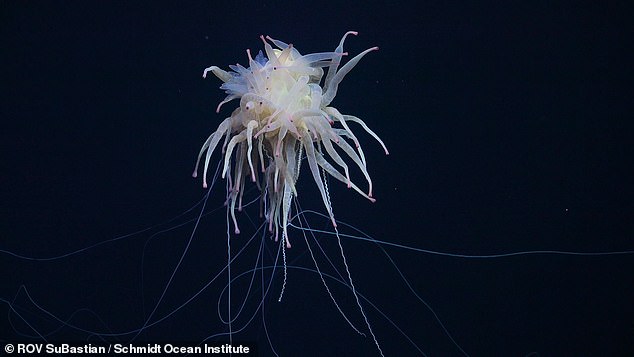
Incredible footage offers the very first glimpse of these creatures, including a sea toad, flying spaghetti monsters (pictured) and a Casper octopus
The new seamount was discovered by a team of oceanographers from the Schmidt Ocean Institute while exploring the Nazca Ridge, an underwater mountain range 900 miles off the coast of Chile.
Using underwater robots, the team was able to map the massive mountain and film some of the life that lives there.
A pristine coral garden was discovered covering approximately 800 square meters – about the size of three tennis courts.
These deep-sea corals were found to be home to a variety of unusual organisms, including rockfish, brittle stars and king crabs.
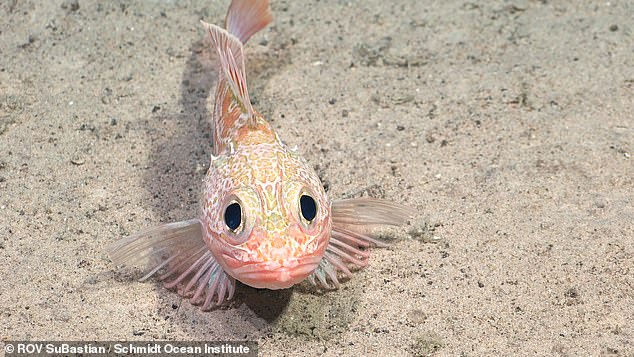
The new seamount was discovered by a team of oceanographers from the Schmidt Ocean Institute while exploring the Nazca Ridge, an underwater mountain range 900 miles off the coast of Chile. Pictured: A new species of scorpionfish
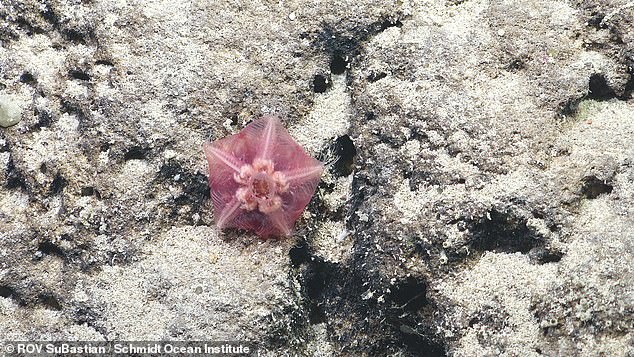
Using underwater robots, the team was able to map the enormous mountain and film some of the life that thrives there. Pictred: a deep-sea starfish
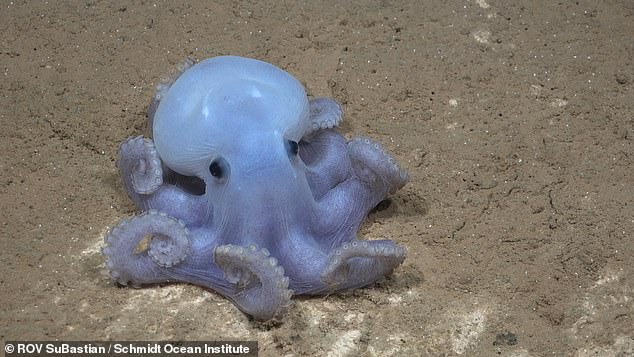
A pristine coral garden was discovered covering 800 square metres – about the size of three tennis courts. Pictured: the Casper octopus
The team also captured the first-ever camera footage of a live Promachoteuthis squid.
This genus is so rare that only three species have been described from a few collected specimens, several of which date from the late 19th century.
Other unusual creatures filmed by the robot include a Casper octopus and two ‘flying spaghetti monsters’.
This was the third expedition conducted in the region this year, with the previous two having documented over 150 new species.
“After completing our third expedition to the region, we have explored about 25 seamounts on the Nazca and Salas y Gómez ridges,” said Tomer Ketter, associate chief scientist and marine technician at the Schmidt Ocean Institute.
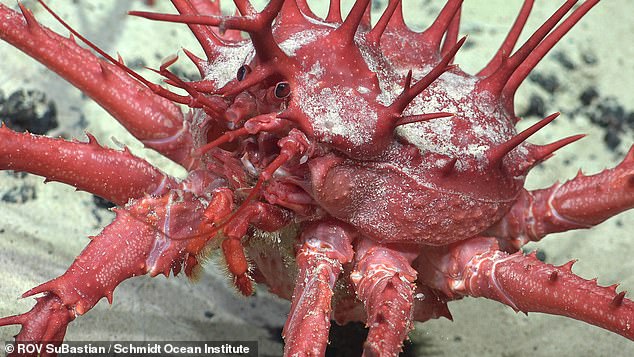
Deep-sea corals have been discovered to be home to a variety of unusual organisms, including stonefish, brittle stars and king crabs (pictured)
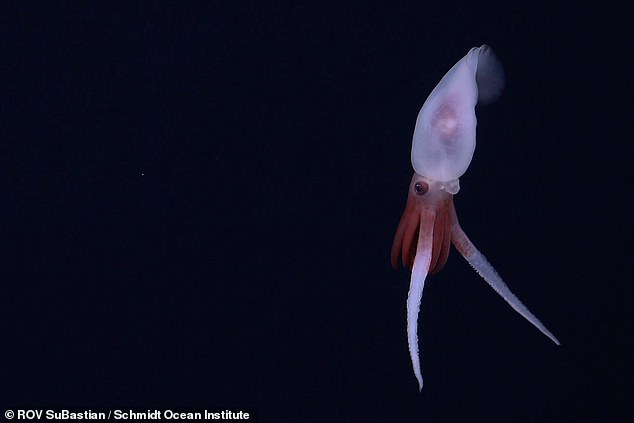
The team also captured the first-ever camera footage of a live Promachoteuthis squid (pictured)

This expedition was the third conducted in the region this year, with the previous two expeditions documenting over 150 new species. Pictured: a Poliopogon sponge with a shrimp
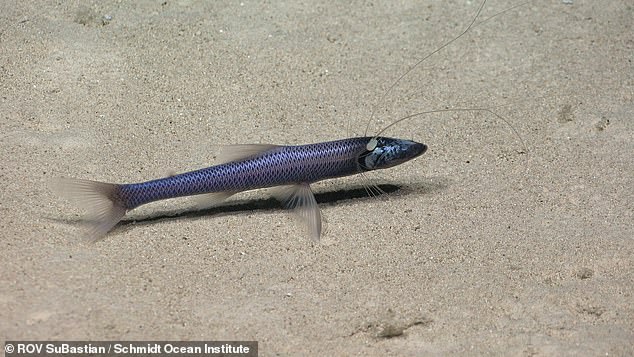
Before the Schmidt Ocean Institute expeditions, this part of the Pacific was known to be home to 1,019 species. Now that number is over 1,300 – and growing. Pictured: a tripod fish
‘Our findings highlight the remarkable diversity of these ecosystems while also showing that there are still gaps in our understanding of the interconnectedness of seamount ecosystems.
“We hope that the data collected during these expeditions will inform future policy and help us protect these pristine environments for future generations.”
Before the Schmidt Ocean Institute expeditions, 1,019 species were found in this part of the Pacific Ocean.
That number has now risen to over 1,300, and it’s still growing.
“The seamounts of the southeast Pacific are home to remarkable biodiversity, with species previously found nowhere else,” said Professor Alex David Rogers, Scientific Director of Ocean Census.
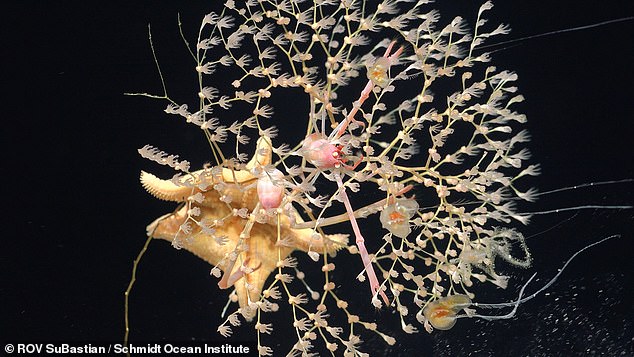
The researchers hope the findings will help to unravel some of the mysteries that lurk in our unexplored oceans. Pictured: Golden coral with a squat lobster and starfish
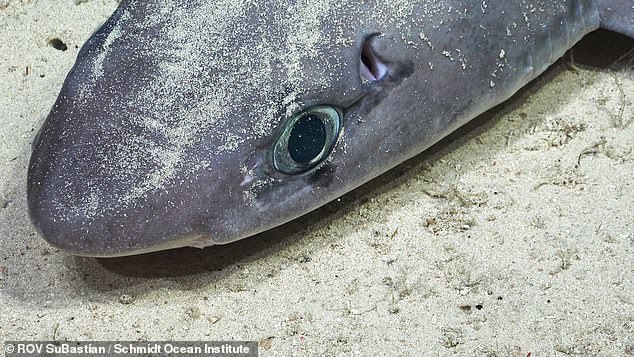
The scientific team documented this Squalus mitsukurii (short-spined dogfish) on the seafloor near an undiscovered seamount
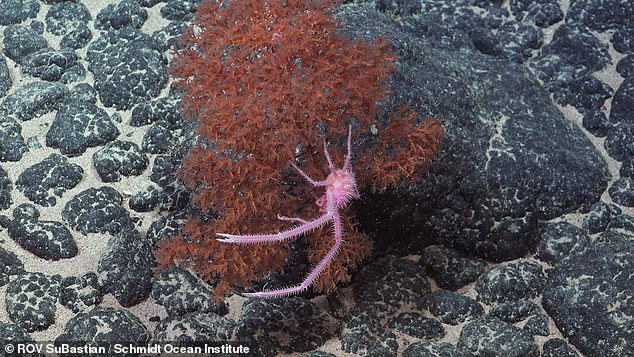
A lobster from the genus Sternostylus, believed to be a newly discovered species, was documented by the underwater robot
‘The work that our taxonomists have also carried out on board Falkor, with support from the Schmidt Ocean Institute team, will greatly enhance our knowledge of the distribution of remarkable life forms on these underwater mountains, including several that have never been mapped or seen by the human eye before.’
The researchers hope the findings will help unravel the mysteries hidden in our unexplored oceans.
“Discovering a new seamount nearly 3 kilometers tall – almost four times the height of the Burj Khalifa – with a vibrant ecosystem was very exciting,” said Dr. Jyotika Virmani, co-chief scientist and executive director of the Schmidt Ocean Institute.
‘Only 26% of the seafloor has been mapped at this high resolution and each expedition on Falkor brings (also) a little more of the unknown seafloor and life on our home planet into view.’
